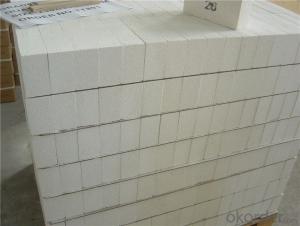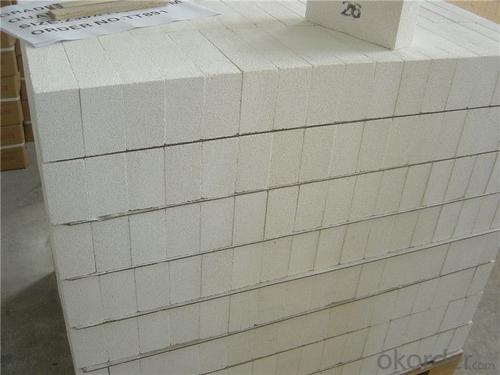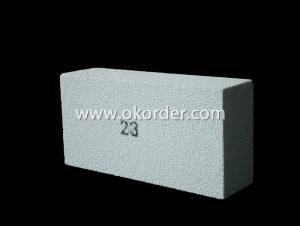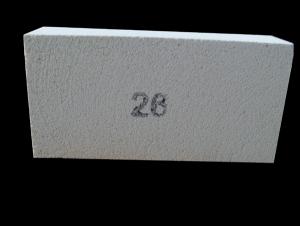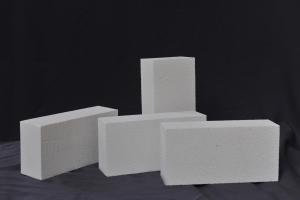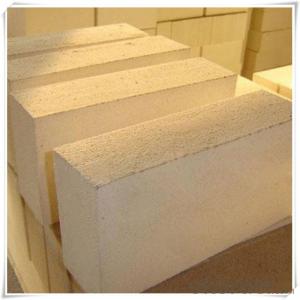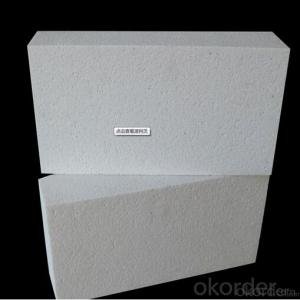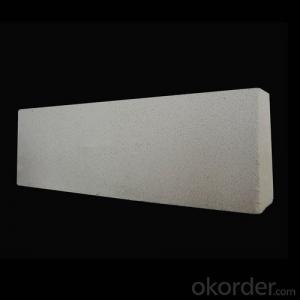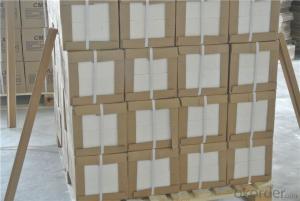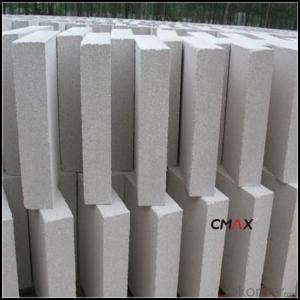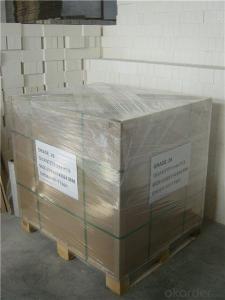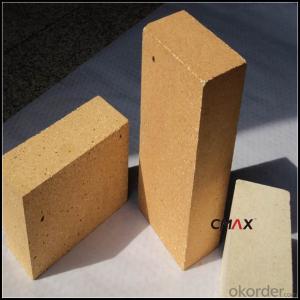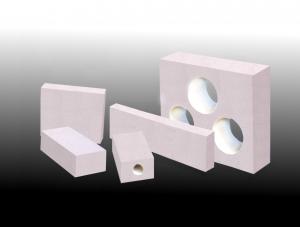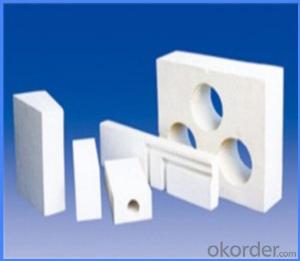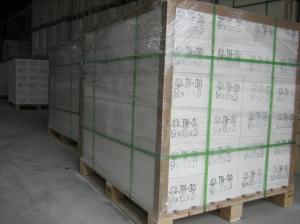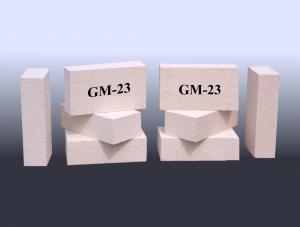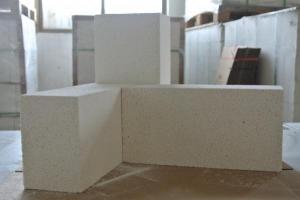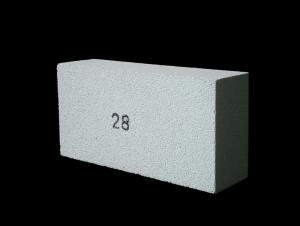Insulating Fire Brick - High Temperature Fireproof Fire Clay Refractory Heat Insulation Bricks for Thermal Equipment
- Loading Port:
- Shanghai
- Payment Terms:
- TT OR LC
- Min Order Qty:
- 1 m.t.
- Supply Capability:
- 1000 m.t./month
OKorder Service Pledge
OKorder Financial Service
You Might Also Like
Thermal Insulation Fire Clay Brick
Refractory brick is a block of refractory ceramic material used in lining furnaces, kilns, fireboxes, and fireplaces.
We provide high quality Refractory Fire Bricks that are used on wide range in the various industries like Cement, Glass and Steel. Refractory Fire Bricks are provided as per the quantity and specifications required by the customers. We provide an extensive range of Refractory Fire Bricks at reasonable prices that depend upon the quantity ordered.
Application
Insulating Fire Brick are used for the lining of converter, alternating current arc furnace, direct Current arc furnace and the ladle slag line, etc.
Company Advantage
(1)Long Insulating Fire Brick manufacture history: 25 years manufacturer
(2)Advanced equipment
(3)Diversification of production standards: ISO ANSI FEPA JIS ASTM
(4)Flexible payment: T/T L/C D/P D/A
(5)Professional marketing team and after-sale service
Insulating Fire Brick main feature:
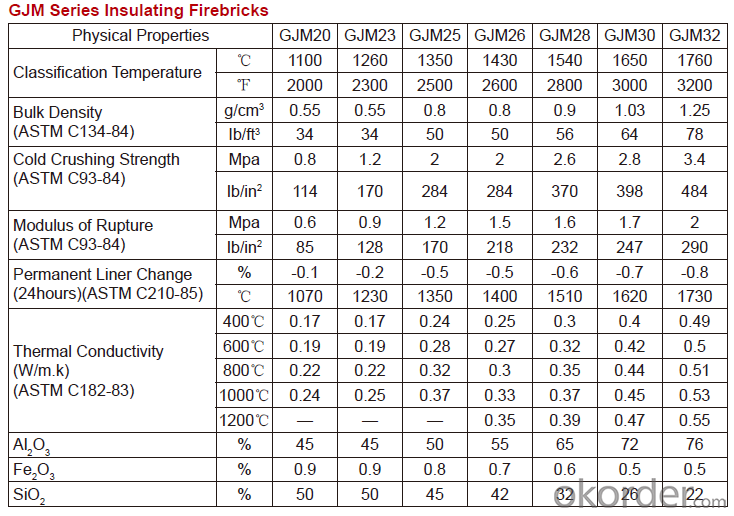
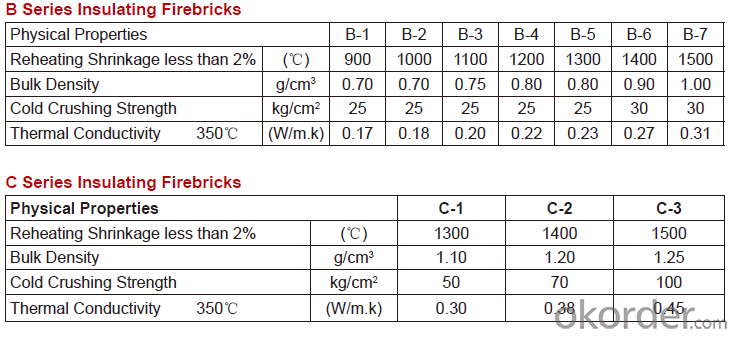
Equipment
1 unit of Ceramic Abrasive (SG Abrasive) pilot production line
2 units of Compact grain Abrasive pilot production lines
1 unit of high-end coated abrasives (abrasive cloth) production line
2 units of Boron Carbide production lines
3 large flexible crushing and sieving lines for grit production lines
6 units of 5000KVA-10000KVA dumping type electric arc furnaces for Brown Fused Alumina fusion
Q1 What’s the transport method?
A1 FCL delivery goods with wooden pallet or wooden case by sea; If LCL delivery, must with wooden case; Sometimes need open top, flat rack or bulk cargo.
Q2 What’s the required payment term?
A2 Generally 30% TT as the prepayment, 70% TT before delivery. If need, 100% Irrevocable Letter of Credit or negotiation.
Q3 Which country are our products exported to?
A3 Apart from entire Chinese market, the US, Russia, Japan, Korea, Australia and some Southeast Asian Nations.
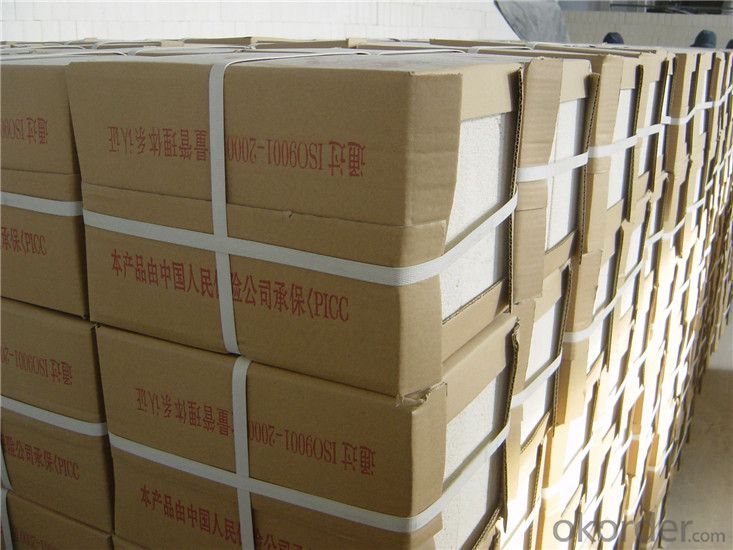
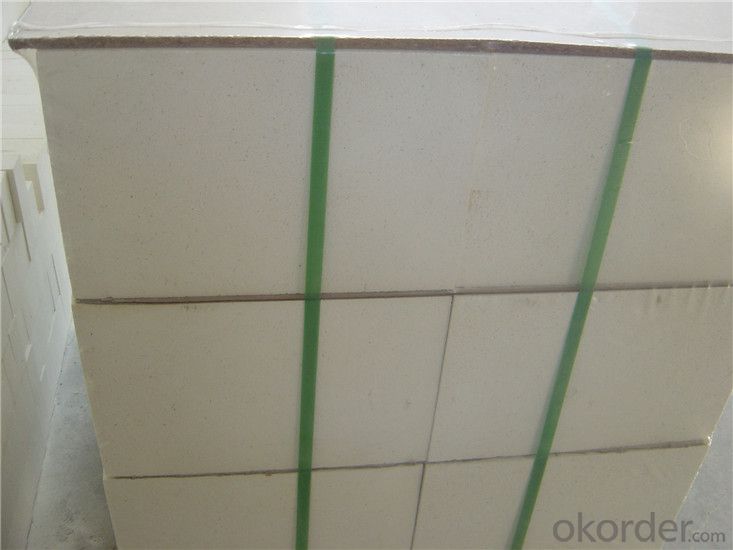
- Q: Are insulating fire bricks easy to cut or shape?
- Insulating fire bricks are relatively easy to cut or shape compared to other types of bricks. This is primarily due to their lower density and composition, which allows them to be more easily manipulated with standard masonry tools. However, it is important to note that the level of ease may vary depending on the specific type and brand of insulating fire brick. Some may require special tools or techniques for cutting or shaping, while others may be more user-friendly. It is always recommended to consult the manufacturer's instructions or seek professional advice when working with insulating fire bricks to ensure proper cutting or shaping techniques are employed.
- Q: Are insulating fire bricks suitable for use in thermal shock applications?
- Yes, insulating fire bricks are suitable for use in thermal shock applications. Insulating fire bricks are designed to withstand rapid changes in temperature without cracking or breaking, making them ideal for thermal shock environments where there are frequent and extreme temperature fluctuations.
- Q: Can insulating fire bricks withstand thermal shock?
- Yes, insulating fire bricks are designed to withstand thermal shock due to their high temperature resistance and low thermal conductivity. They are made to endure rapid changes in temperature without cracking or breaking, making them suitable for various high-temperature applications.
- Q: Do insulating fire bricks have a high insulation efficiency?
- Yes, insulating fire bricks have a high insulation efficiency. Due to their low thermal conductivity and high heat resistance, they effectively prevent the transfer of heat, thereby providing excellent insulation.
- Q: Can insulating fire bricks be used for insulation in foundries?
- Insulating fire bricks have the capability to be utilized for insulation purposes in foundries. These bricks are specially constructed to possess a high level of thermal resistance and a low level of thermal conductivity, rendering them exceptionally suitable for scenarios that necessitate insulation. In the context of foundries, where elevated temperatures are present, insulating fire bricks can be employed to line the walls, floors, and roofs, thus diminishing heat loss and enhancing energy efficiency. Furthermore, they contribute to maintaining a consistent temperature within the foundry, thereby ensuring uniform dispersion of heat while preventing heat loss to the surrounding environment. Moreover, owing to their lightweight nature and easy installation process, insulating fire bricks emerge as a pragmatic choice for insulation in foundries.
- Q: Insulation brick should pay attention to external walls?
- Construction at room temperature, 24h after spraying water conservation, water spraying should not be too much, not flow. Unsuitable for winter construction. According to the national standard, seven consecutive days and nights, the average temperature is less than 5 degrees, may not carry on the external wall insulation, brick construction.
- Q: How do insulating fire bricks affect the overall noise insulation of a building?
- Insulating fire bricks can significantly enhance the noise insulation of a building. These bricks have excellent sound-absorbing properties due to their high density and ability to dampen sound vibrations. By reducing the transmission of airborne and impact noises, insulating fire bricks help create a quieter and more peaceful indoor environment.
- Q: How do insulating fire bricks affect the overall durability of a structure?
- Insulating fire bricks can significantly enhance the overall durability of a structure. Their insulating properties help to regulate heat transfer, preventing thermal shocks and minimizing damage caused by extreme temperatures. By reducing heat loss, these bricks also improve energy efficiency, reducing the strain on heating and cooling systems. Additionally, insulating fire bricks are highly resistant to chemical corrosion and erosion, increasing the lifespan of the structure and providing long-term durability.
- Q: Can insulating fire bricks be used in the construction of boilers for steam generation?
- Yes, insulating fire bricks can be used in the construction of boilers for steam generation. Insulating fire bricks have excellent heat insulation properties, making them suitable for use in high-temperature applications such as boilers. They help to minimize heat loss, improve energy efficiency, and ensure safe and efficient steam generation.
- Q: Can insulating fire bricks be used in the construction of flue liners?
- Yes, insulating fire bricks can be used in the construction of flue liners. Insulating fire bricks are designed to withstand high temperatures and provide excellent insulation properties. These bricks are made from lightweight materials such as vermiculite or perlite, which have low thermal conductivity. This makes them ideal for lining flues, as they can help to retain heat and improve the efficiency of the flue system. Additionally, insulating fire bricks are resistant to thermal shock and can withstand rapid temperature changes, which is important in flue applications where the temperatures can fluctuate significantly. Overall, using insulating fire bricks in the construction of flue liners can help to enhance the performance and safety of the flue system.
Send your message to us
Insulating Fire Brick - High Temperature Fireproof Fire Clay Refractory Heat Insulation Bricks for Thermal Equipment
- Loading Port:
- Shanghai
- Payment Terms:
- TT OR LC
- Min Order Qty:
- 1 m.t.
- Supply Capability:
- 1000 m.t./month
OKorder Service Pledge
OKorder Financial Service
Similar products
Hot products
Hot Searches
Related keywords
